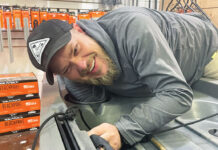In a city of 2.7 million, Chicagoland resident Mike Paus finds solitude gazing up at the skyscrapers and historic truss bridges from the cockpit of his 12-foot folding kayak. He likes to paddle in the morning when there aren’t many people around—only turtles, ducks and freighter ships arriving from ports worldwide.
“You have it all to yourself,” says Paus, who owns an Oru Beach LT kayak. “It’s very good to just get away from it all and collect your thoughts. I encourage anybody who wants to improve their mental health to go take up kayaking, even in the city. You’ll be surprised how much calm there is.”

Being on the water affords a perspective of the city most residents miss, says Paus, whether it’s seeing wildlife, like the endangered black-crowned night heron, or watching a 100-year-old steel bridge creak open to let tall vessels pass.
“I’m usually above that bridge,” says Paus. “But seeing what it looks like from underneath is a great perspective that you get when you’re kayaking.”
How the next generation of folding kayaks is making paddling more accessible
Recent innovations in folding kayak design have made it easier for urbanites like Paus to access paddling.
Brands like Oru, Tucktec, Terravent and Mycanoe now make affordable, lightweight kayaks which fold up small enough to store in a closet. You don’t need a roof rack, or even a car, to transport these next-generation foldables. Ranging in weight from the 20-pound Oru Lake to the 42-pound Oru Tandem Haven TT, they’re easy to throw in the trunk of a car or carry on the subway. You can even check them on an airplane.
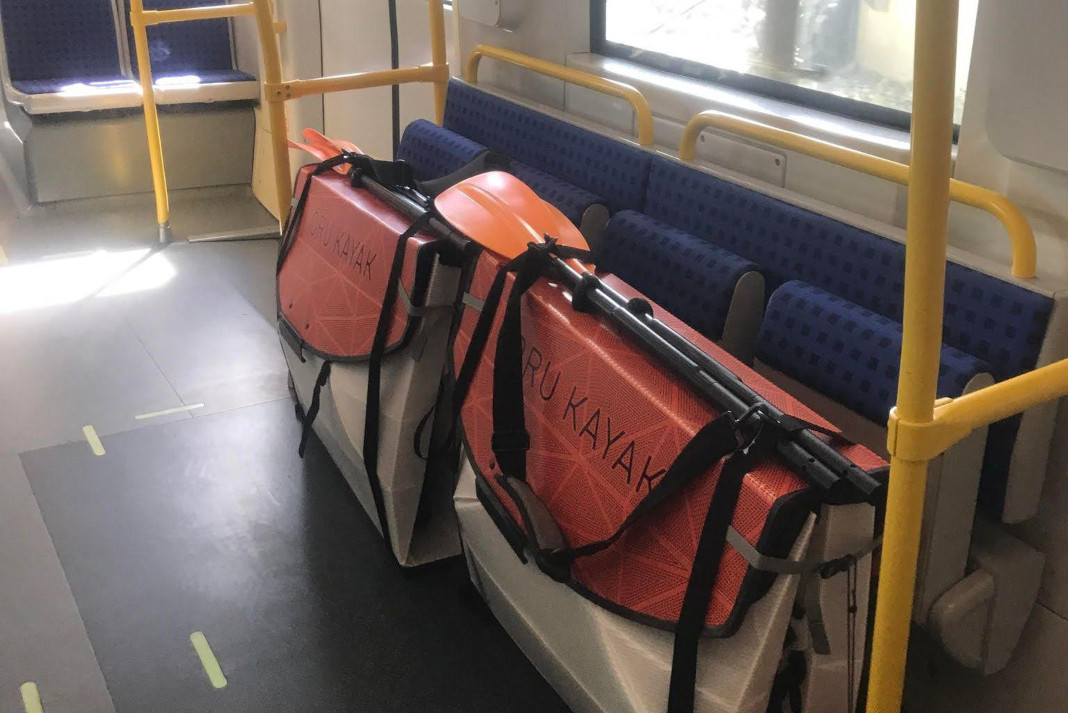
Paus, who lives in a 600-foot condo, takes his Oru Beach LT pretty much everywhere he goes: the L train, the trunk of his Saturn Vue, and on business trips around the U.S. Paus logs his paddles by taking one photo each time he goes out, then uploading it into an album called “Oru Paddles.” Since he purchased his Oru in 2018, he’s taken it out 450 times. He’s already more than halfway to his goal of paddling all 50 states. So far he’s paddled 27—reaching as far west as San Francisco, California, and east to Camden, New Jersey.
Emergence of the new folding scene
Before Oru came on the scene in 2013 with its origami design, most of the folding kayaks on the market were skin-on-frames. These are not only pricier—the most economical, the Pakboats Puffin Saco, retails for $1,339—but also more complicated and time-consuming to put together.
By contrast, the most affordable folding kayak on the market today, the eight-foot Tucktec, retails for $349. Thanks to its system of pleats and clamps, it can be assembled in five minutes or less.
Paus has gotten his assembly time for the Beach LT down to four minutes. It’s so easy he doesn’t hesitate to pull off anywhere that looks kayakable to check it out.
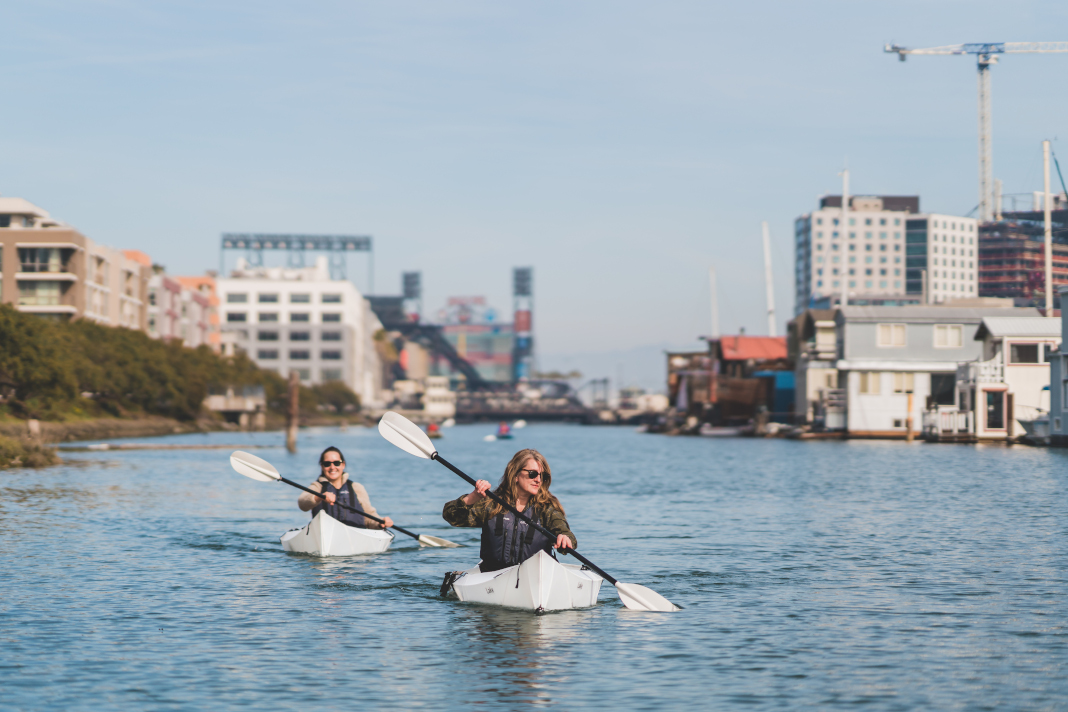
Oru cofounder Anton Willis was inspired to create the origami kayak when he moved to a small studio apartment in San Francisco and had to store his 16-foot hard-shell at his father’s house.
His co-founder Ardy Sobhani says urban kayakers want the freedom to explore the great outdoors, and Oru provides that. According to Sobhani, 40 percent of current sales go to urban areas. Their top ship-to locations are San Francisco, Seattle and Portland.
Tucktec, based outside Myrtle Beach, South Carolina, ships the most kayaks to Seattle, Portland and Chicago. The Canadian city of Toronto comes in at sixth.
“There’s a (Tucktec) kayak in just about every city that you can think of, which is pretty cool,” says Tucktec General Manager Pete Connell.
For people living in the most densely populated cities in North America, a folding kayak is more than cool. It can be the difference whether the much-needed physical and emotional benefits of paddling are available at all.
“There is something about being on the water alone that is just rejuvenating for me,” shares Barbara Fonseca, a busy mom from the Bronx, New York. “It doesn’t even feel like I’m in the city when I’m on the water.
Fonseca doesn’t always paddle alone—sometimes she is joined by her son and his friends. She has multiple Tucktecs folded in duffel bags ready to go. “The launch is about a 10–15 minute drive from me,” she says. “but it’s public transportation accessible and I could get there even if I didn’t have a car.”
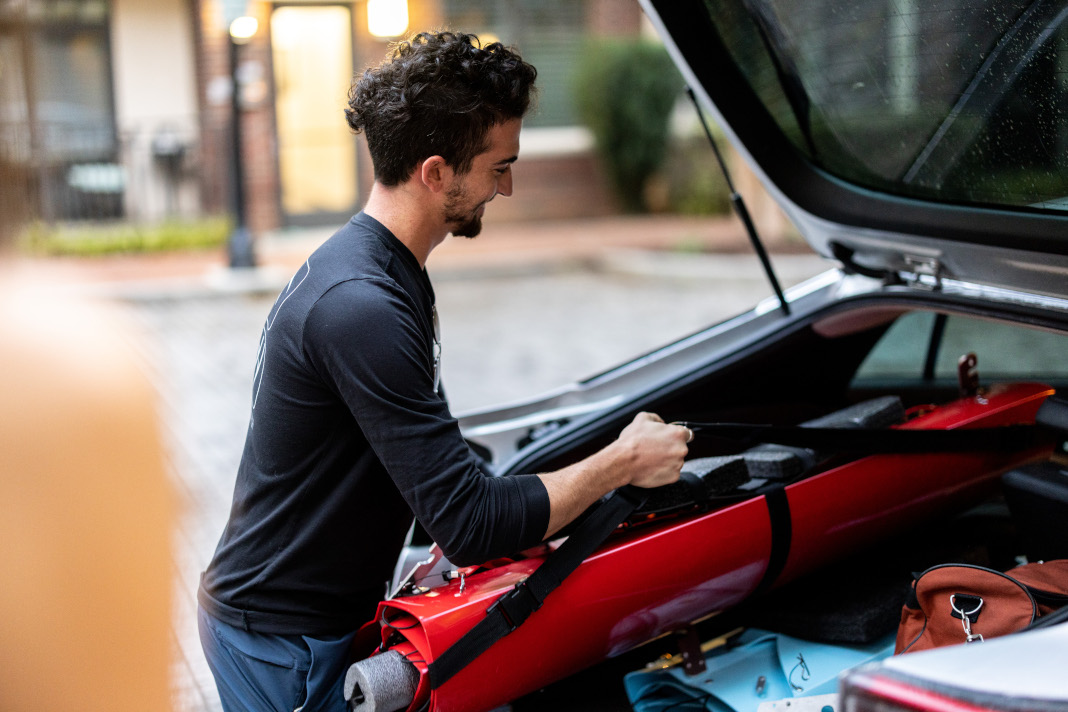
The growing folding community is a tale of many cities
Any folding kayak owner will tell you they attract quite a bit of attention when they show up at the launch with a boat in a bag. But in larger metropolitan areas, people have more of a habit of keeping to themselves. If you take a closer look at Tucktec’s shipping data, you see sales aren’t just correlated to population density but also to how many folding kayaks are already there. Connell believes there is a social element at play here, with a sweet spot in medium-sized cities.
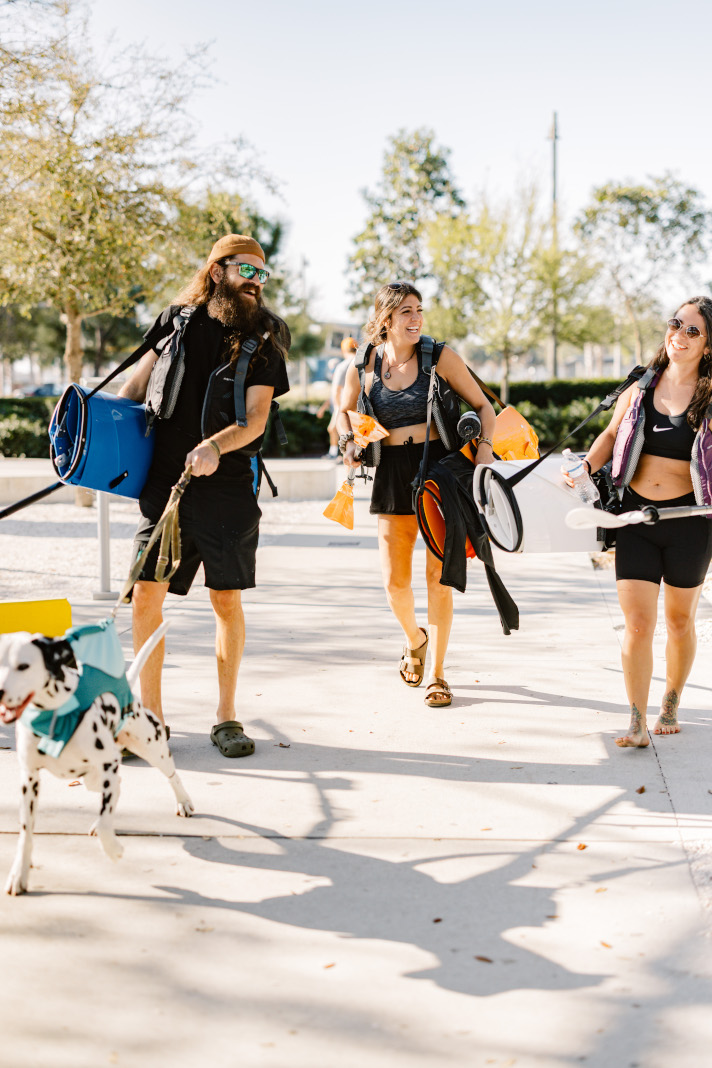
“You get into that medium-sized city, where, say, there are 40 people at the water instead of a thousand,” shares Connell. “Now you’ve got a better chance of those people behaving more socially and paying more attention to what’s going on around them.”
“I look at it like a viral thing,” Connell explains. “We plant one or two (kayaks) there, you see them, the interest starts to get garnered, and we go back to that original concept. Eight people see it; four go to the website, and one of them buys a kayak.”
This is exactly what happened to Michelle Tribe of Ottawa, Canada, who decided to buy folding kayaks after a “lovely chat” with an Oru kayaker she encountered on the Rideau Canal in Ottawa. She’d considered inflatables but didn’t like the idea of carrying around a pump.
“I thought they would be a perfect fit for our downtown, car-free lifestyle,” she says. “We use a car-sharing service, so we’re able to take our Oru kayaks all around the Ottawa area to try new-to-us rivers, streams, and lakes.“
“Our goal has never been to try to take over traditional kayaks,” Pete Connell explains. “We want a durable and sustainable alternative to the inflatable kayak. He laughs. “You know, I can fit six of these in my Honda Accord. Eight if I really try. Don’t ask me how I got to know that.”



